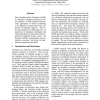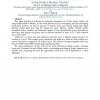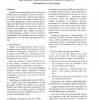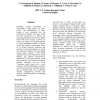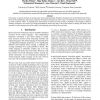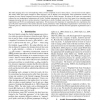ICASSP
2011
IEEE
13 years 4 months ago
2011
IEEE
We propose the Arabic Chat Alphabet (ACA) as naturally written in everyday life for dialectal Arabic speech transcription. Our assumption is that ACA is a natural language that in...
ACL
2009
13 years 10 months ago
2009
The Columbia Arabic Treebank (CATiB) is a database of syntactic analyses of Arabic sentences. CATiB contrasts with previous approaches to Arabic treebanking in its emphasis on spe...
ICDM
2010
IEEE
13 years 10 months ago
2010
IEEE
For languages with rich content over the web, business reviews are easily accessible via many known websites, e.g., Yelp.com. For languages with poor content over the web like Arab...
SIGPRO
2008
14 years 10 days ago
2008
This paper describes a technique for automatic recognition of off-line printed Arabic text using Hidden Markov Models. In this work different sizes of overlapping and non-overlapp...
COLING
1990
14 years 1 months ago
1990
Arabic has some special syntax features which lead to complex syntax structures. We have developed a formal description of Arabic syntax in Definite Clause Grammar. This grarnrnar...
NAACL
2003
14 years 1 months ago
2003
Searching online information is increasingly a daily activity for many people. The multilinguality of online content is also increasing (e.g. the proportion of English web users, ...
LREC
2008
14 years 1 months ago
2008
In this paper, we present the details of creating a pilot Arabic proposition bank (Propbank). Propbanks exist for both English and Chinese. However the morphological and syntactic...
LREC
2010
14 years 1 months ago
2010
The Arabic language has a very rich morphology where a word is composed of zero or more prefixes, a stem and zero or more suffixes. This makes Arabic data sparse compared to other...
LREC
2010
14 years 1 months ago
2010
Morphological analyzers and part-of-speech taggers are key technologies for most text analysis applications. Our aim is to develop a part-of-speech tagger for annotating a wide ra...
LREC
2010
14 years 1 months ago
2010
We have successfully adapted and extended the automatic Multilingual, Interoperable Named Entity Lexicon approach to Arabic, using Arabic WordNet (AWN) and Arabic Wikipedia (AWK)....

